
Weert municipality / Gemeente Weert (L)
Town and municipality in the north-western part of Limburg. Part of the Weert municipality are the villages Altweerterheide, Stramproy, Laar, Swartbroek and Tungelroy. The former village of Boshoven is now Weert's largest neighborhood but is mentioned seperately.
Stad en gemeente in het noord-westelijke gedeelte van Limburg. Deel van de gemeente zijn de dorpen Altweerterheide, Stramproy, Laar, Swartbroek en Tungelroy. Het voormalige dorp Boshoven is heden de grootste wijk van de stad maar wordt hier apart vermeld.
Weert
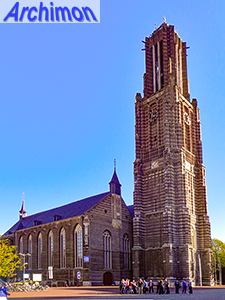
The St. Martinus is a Gothic hall-church from the 15th and 16th century. The lower half of the tower dates from 1528-1529 and was built in a style that is closely related to Campine Gothic. In 1887-1889 a new segment was added, designed by J. Kayser. In 1958-1960 the lantern was added, which was design by Th.G. Verlaan.
Location: Markt 8
De St. Martinus is een gotische hallenkerk uit de 15e en 16e eeuw. De onderste helft van de toren dateert uit 1528-1529 en is gebouwd in een stijl die nauw verwant is aan de Kempense gotiek. In 1887-1889 werd een nieuw segment toegevoegd, ontworpen door J. Kayser. In 1958-1960 werd de lantaarn toegevoegd, ontworpen door Th.G. Verlaan.
Locatie: Markt 8
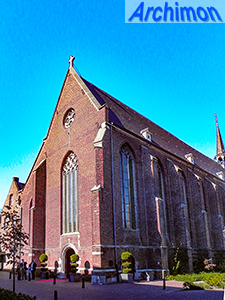
The Paterskerk is a two-aisled Gothic church from the early-16th century. Originally it belonged to a Franciscan monastery which in 1973 became a retirement home. Today only the choir is used for religious purposes while the nave is used for cultural events.
Location: Biest 43
De Paterskerk is een tweebeukige gotische kerk uit het begin van de 16e eeuw. Oorspronkelijk behoorde het tot een franciscaner klooster dat in 1973 een bejaardentehuis werd. Tegenwoordig wordt alleen het koor nog voor religieuze doeleinden gebruikt, het schip heeft een culturele toepassing.
Locatie: Biest 43

The St. Rumolduskapel is a small chapel which was built in ca. 1775.
Location: Molenpoort 27
De St. Rumolduskapel is een kleine kapel, die werd gebouwd rond1775.
Locatie: Molenpoort 27
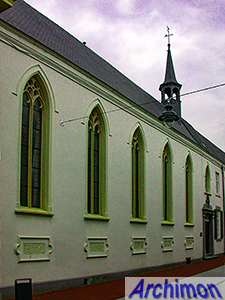
The chapel of the Bridgettine convent was built in 1843 in early neo-Gothic style on the site of part of an Augustine convent which had been closed in 1797 and was largely demolished in 1836.
Location: Maasstraat 17
De kapel van het Birgittinessenklooster werd in 1843 gebouwd in vroege neogotische stijl op een plek waar tot 1836 een deel van in 1797 gesloten Augustijnenklooster had gestaan.
Locatie: Maasstraat 17
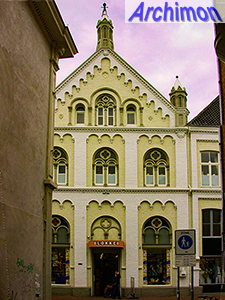
The Ursuline convent was founded in 1876 by exiled German nuns. The chapel in neo-Romanesque style was
built in 1880. The convent was closed in 1989 and the complex was turned into
shops.
Location: Langstraat 20a
Het Ursulinenklooster werd in 1876 gesticht door verbannen Duitse nonnen. De kapel in neoromaanse stijl werd gebouwd in 1880. Het klooster werd in 1989 gesloten en het complex werd verbouwd tot winkels.
Locatie: Langstraat 20a

The reformed church or Bethelkerk was built in 1910-1912 to a design by G.W. van Heukelom, an architect best known for his work for the railroad. It's a small octagonal building in a simple Rationalist style.
Location: Maaspoort 30
De hervormde kerk of Bethelkerk werd gebouwd in 1910-1912 naar een ontwerp van G.W. van Heukelom, een architect die vooral bekend is van zijn werk voor de spoorwegen. Het is een klein achtzijdig gebouw in eenvoudige rationalistische stijl.
Locatie: Maaspoort 30
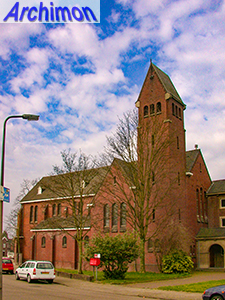
The chapel of the monastery of the Congregation of the Holy Spirit was designed by P.J.H. Cuypers in neo-Romanesque style and built in 1911. It was extended in Traditionalist style in ca. 1930 by C. and J. Franssen.
Location: Coenraad Abelstraat 36
De kapel van het klooster van de Congregatie van de Heilige Geest is ontworpen door P.J.H. Cuypers in neoromaanse stijl en werd gebouwd in 1911. In ca. 1930 werd het uitgebreid in traditionalistische stijl C. en J. Franssen.
Locatie: Coenraad Abelstraat 36
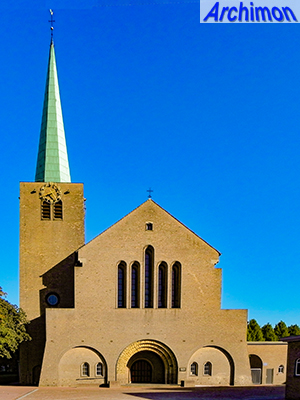
The St. Joseph in the Keent neighbourhood was designed by A.J.N. Boosten and built in 1939-1940. Like many of Boosten's churches it features both Expressionist and Traditionalist elements.
Location: Sint Jozefskerkplein 1
De St. Joseph in de wijk Keent is ontworpen door A.J.N. Boosten en gebouwd in 1939-1940. Net als veel van Boosten's kerken bevat het zowel expressionistische als traditionalistische elementen.
Locatie: Sint Jozefskerkplein 1

The Onbevlekt Hart van Maria or Fatimakerk dates from 1953-1955 and was designed by P.H. Weegers. It has a remarkable fan-shaped nave and a circular choir with a tower. It closed in 2010 and today has a cultural purpose as well as hosting an Eritrean Orthodox community.
Location: Coenraad Abelstraat 27
De Onbevlekt Hart van Maria of Fatimakerk dateert uit 1953-1955 en is ontworpen door P.H. Weegers. Het heeft een opvallend waaiervormig schip en een cirkelvormig koor met toren. De kerk werd in 2010 gesloten en heeft tegenwoordig een culturele bestemming en biedt tevens onderdak aan een Eritrese orthodoxe gemeente.
Locatie: Coenraad Abelstraat 27
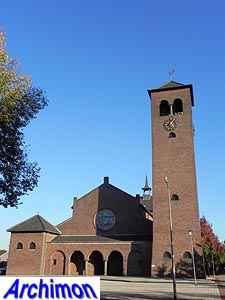
The St. Oda of Boshoven is a large basilica
in Traditionalist style, designed by J. Ramaekers and built in 1955-1956.
Location: Vrakkerstraat 21
De St. Oda van Boshoven is een grote basiliek in traditionalistische stijl, ontworpen door J. Ramaekers en gebouwd in 1955-1956.
Locatie: Vrakkerstraat 21

The H. Hart van Jezus of Altweerterheide, a little outside the actual Weert, was built in 1935-1936 after a design by J.Th.J. Cuypers and his son P. Cuypers Jr..
Location: Bocholterweg 122
De H. Hart van Jezus van Altweerterheide, iets buiten het eigenlijke Weert, werd gebouwd in 1935-1936 naar een ontwerp van J.Th.J. Cuypers en zijn zoon P. Cuypers Jr.
Locatie: Bocholterweg 122